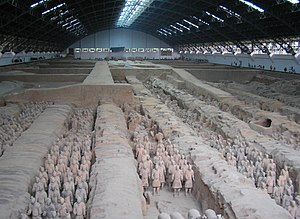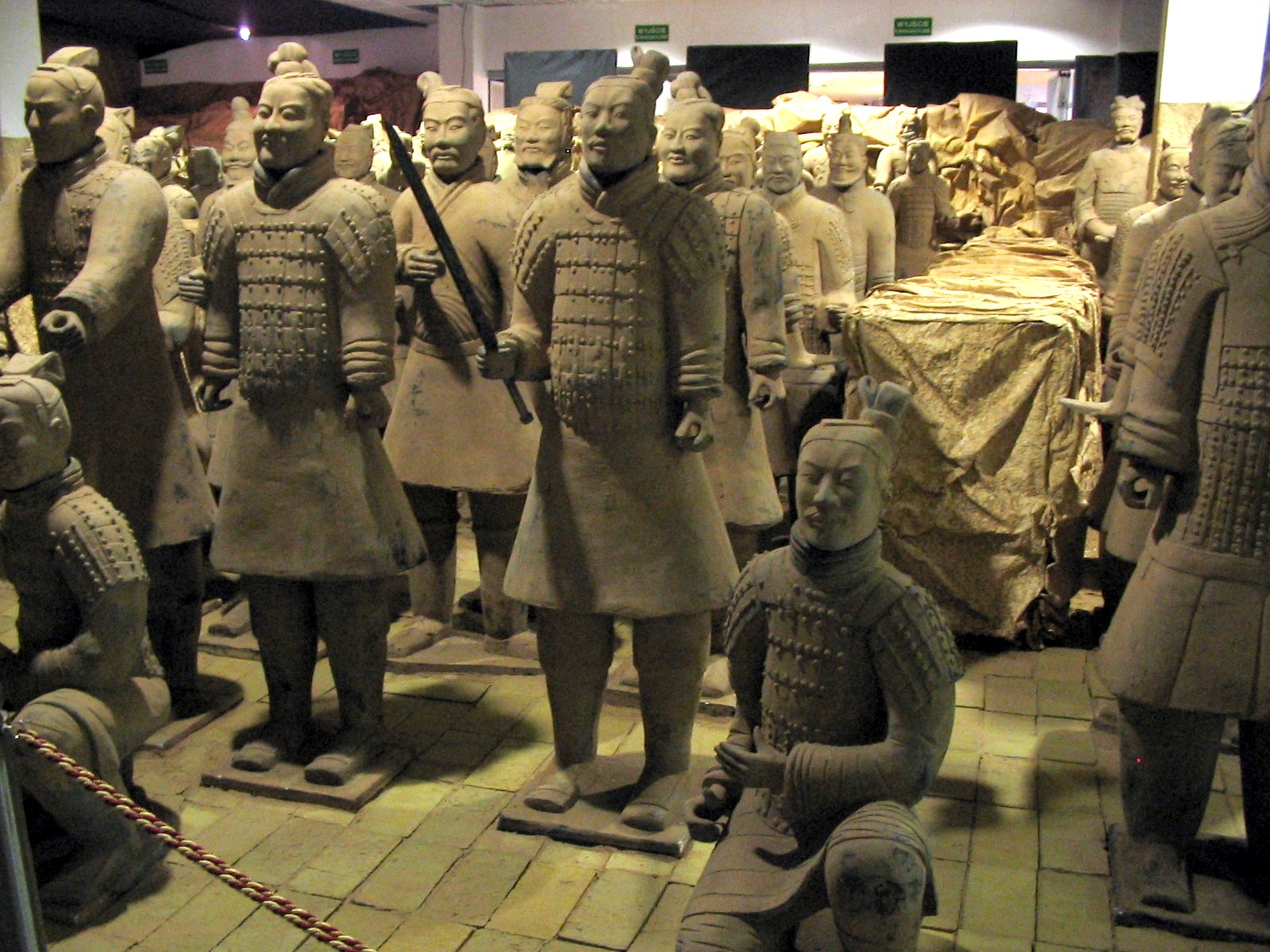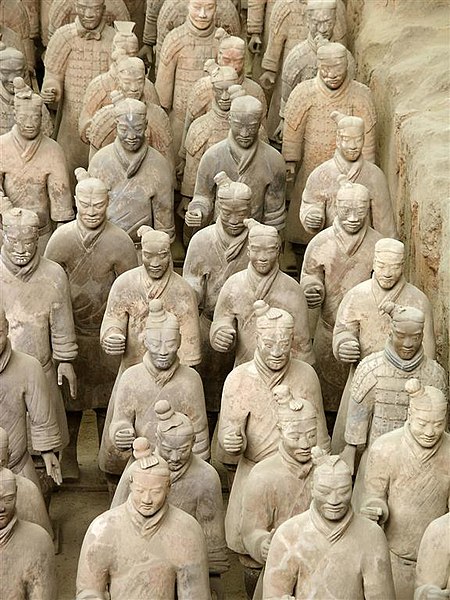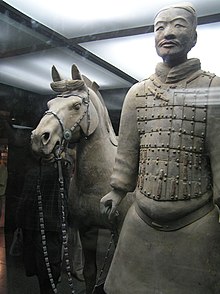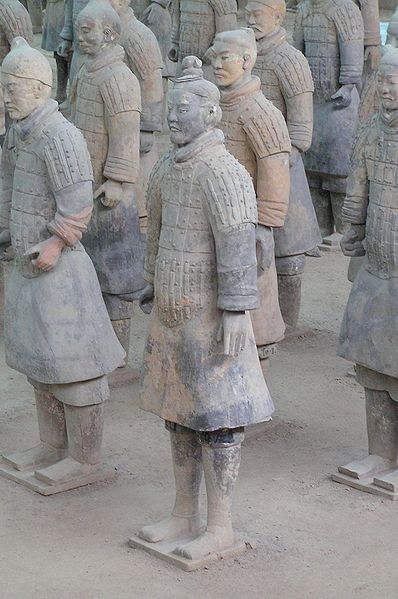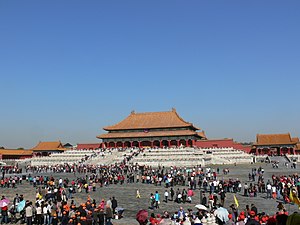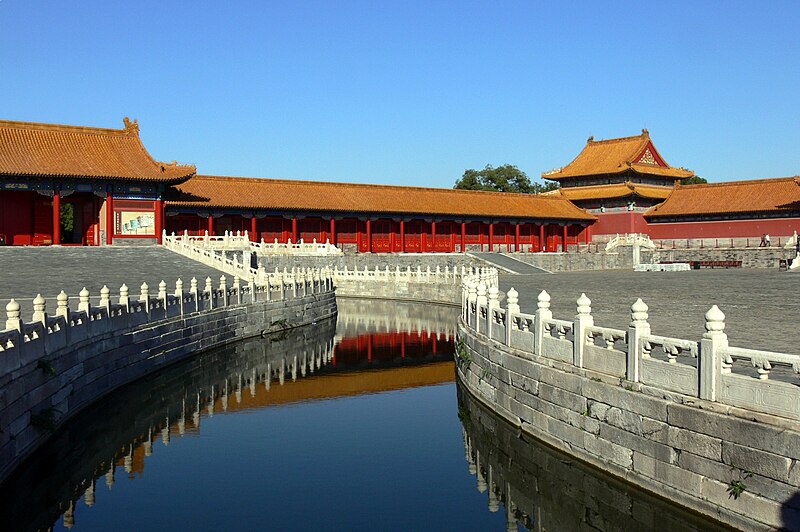Jiuzhaigou National Park (pinyin: Jiǔzhàigōu; literally "Valley of Nine Villages"; Tibetan: Zitsa Degu) is a nature reserve in the north of Sichuan, a province in south western China. It is known for its many multi-level waterfalls and colorful lakes, and was declared a UNESCO World Heritage Site in 1992. It belongs to the category V (Protected Landscape) in the IUCN system of protected area categorization.
 Known in English as Jiuzhai Valley it lies at the southern end of the Minshan mountain range, 330 km (205 mi) north of the provincial capital of Chengdu. It is part of the Jiuzhaigou County (formerly Nanping County) in the Aba Tibetan Qiang Autonomous Prefecture of northwestern Sichuan province, near the Gansu border.
Known in English as Jiuzhai Valley it lies at the southern end of the Minshan mountain range, 330 km (205 mi) north of the provincial capital of Chengdu. It is part of the Jiuzhaigou County (formerly Nanping County) in the Aba Tibetan Qiang Autonomous Prefecture of northwestern Sichuan province, near the Gansu border.The valley covers 720 km2 (278 sq mi), with buffer zones covering an additional 600 km2 (232 sq mi). Its elevation, depending on the area considered, ranges from 1,998 to 2,140 m (at the mouth of Shuzheng Gully) to 4,558 - 4,764 m (on Mount Ganzigonggai at the top of Zechawa Gully).
The climate is cool temperate with a mean annual temperature of 7.2 °C, with means of -1 °C in January and 17 °C in July. Total annual rainfall is 661 mm, 80% of which occurs between May and October.
History
 The remote region was inhabited by various Tibetan and Qiang peoples for centuries, but was not officially discovered by the government until 1972. Extensive logging took place until 1979, when the Chinese government banned such activity and made the area a national park in 1982. An Administration Bureau was established and the site officially opened to tourism in 1984; layout of facilities and regulations were completed in 1987. The site was inscribed by UNESCO as a World Heritage Site in 1992 and a World Biosphere Reserve in 1997.
The remote region was inhabited by various Tibetan and Qiang peoples for centuries, but was not officially discovered by the government until 1972. Extensive logging took place until 1979, when the Chinese government banned such activity and made the area a national park in 1982. An Administration Bureau was established and the site officially opened to tourism in 1984; layout of facilities and regulations were completed in 1987. The site was inscribed by UNESCO as a World Heritage Site in 1992 and a World Biosphere Reserve in 1997.Since opening, tourist activity has increased every year: from 5,000 in 1984 to 170,000 in 1991, 160,000 in 1995, to 200,000 in 1997, including about 3,000 foreigners. Visitors numbered 1,190,000 in 2002. As of 2004, the site averages 7,000 visits per day, with a quota of 12,000 being reportedly enforced during high season. The Town of Zhangzha at the exit of the valley and the nearby Songpan County feature an ever-increasing number of hotels, including several polished five-stars, such as Sheraton.
Population
Jiuzhaigou (literally "Nine Village Valley") takes its name from the nine Tibetan villages along its length. Seven of them are still populated today. The main agglomerations that are readily accessible to tourists are Heye, Shuzheng and Zechawa along the main paths that cater to tourists, selling various handicrafts, souvenirs and snacks. There is also Rexi in the smaller Zaru Valley and behind Heye village are Jianpan, Panya and Yana villages. The Valley's no longer populated villages are Guodu and Hejiao.
Finally, the Penbu, Panxing and Yongzhu villages lie along the road that passes through the town of Jiuzhaigou/Zhangza outside the valley.
In 1997, the permanent population of the valley was about 1000, made up of about 130 Tibetan families. Due to the protected nature of the park, agriculture is no longer permitted so the locals now rely on tourism and local government subsidies to make a living.
Ecology
 Jiuzhaigou's ecosystem is classified as temperate broad-leaf forest and woodlands, with mixed mountain and highland systems. Nearly 300 km2 (116 sq mi) of the core scenic area are covered by virgin mixed forests. Those forests take on attractive yellow, orange and red hues in the autumn, making that season a popular one for visitors. They are home to a number of plant species of interest, such as endemic varieties of rhododendron and bamboo.
Jiuzhaigou's ecosystem is classified as temperate broad-leaf forest and woodlands, with mixed mountain and highland systems. Nearly 300 km2 (116 sq mi) of the core scenic area are covered by virgin mixed forests. Those forests take on attractive yellow, orange and red hues in the autumn, making that season a popular one for visitors. They are home to a number of plant species of interest, such as endemic varieties of rhododendron and bamboo.Local fauna includes the endangered giant panda and golden snub-nosed monkey. Both populations are very small (less than 20 individuals for the pandas) and isolated. Their survival is in question in a valley subject to increasing tourism. Jiuzhaigou is also home to approximately 140 bird species.
Jiuzhaigou's landscape is made up of high-altitude karsts shaped by glacial, hydrological and tectonic activity. It lies on major faultlines on the diverging belt between the Qinghai-Tibet Plate and the Yangtze Plate, and earthquakes have also shaped the landscape. The rock strata is mostly made up of carbonate rocks such dolomite and tufa, as well as some sandstone and shales.
The valley includes the catchment area of three gullies (which due to their large size are often called valleys themselves), and is one of the sources of the Jialing River, part of the Yangtze River system.
Jiuzhaigou's best-known feature is its dozens of blue, green and turquoise-colored lakes. The local Tibetan people call them "Haizi" in Chinese, meaning "son of the sea". Originating in glacial activity, they were dammed by rockfalls and other natural phenomena, then solidified by processes of carbonate deposition. Some lakes have a high concentration of calcium carbonate, and their water is very clear so that the bottom is often visible even at high depths. The lakes vary in color and aspect according to their depths, residues, and surroundings.
Some of the less stable dams and formations have been artificially reinforced, and direct contact with the lakes or other features is forbidden to tourists.
Notable features
 Jiuzhaigou is composed of three valleys arranged in a Y shape. The Rize and Zechawa valleys flow from the south and meet at the centre of the site where they form the Shuzheng valley, flowing north to the mouth of the valley. The mountainous watersheds of these gullies are lined with 55 km (34 mi) of roads for shuttle buses, as well as boardwalks and small pavilions. The boardwalks are typically located on the opposite side of the lakes from the road, shielding them from disturbance by passing buses.
Jiuzhaigou is composed of three valleys arranged in a Y shape. The Rize and Zechawa valleys flow from the south and meet at the centre of the site where they form the Shuzheng valley, flowing north to the mouth of the valley. The mountainous watersheds of these gullies are lined with 55 km (34 mi) of roads for shuttle buses, as well as boardwalks and small pavilions. The boardwalks are typically located on the opposite side of the lakes from the road, shielding them from disturbance by passing buses.Most visitors will first take the shuttle bus to the end of Rize and/or Shuzheng gully, then make their way back downhill by foot on the boardwalks, taking the bus instead when the next site is too distant. Here is a summary of the sites found in each of the gullies.
Rize Valley
The 18 km (11 mi) long Rize Valley (pinyin: Rìzé Gōu) is the south-western branch of Jiuzhaigou. It contains the largest variety of sites and is typically visited first. Going downhill from its highest point, one passes the following sites:
- The Primeval Forest (Yuánshǐ Sēnlín) is a preserved ancient woodland. It is fronted by spectacular views of the surrounding mountains and cliffs, including the 500 m high blade-shaped Sword Rock (Jiàn Yán).
- Swan Lake (Tiān'é Hǎi) is a 2250 m long, 125 m wide picturesque lake named for its visiting swans and ducks.
- Grass Lake (Cǎo Hǎi) is a shallow lake covered in intricate vegetation patterns.
- Arrow Bamboo Lake (Jiànzhú Hǎi), covering an area of 170,000 m², is a shallow lake with a depth of 6 m. It lies at an elevation of 2,618 m, and was a main feature site for the 2002 Chinese film Hero.
- Panda Lake (Xióngmāo Hǎi) features curious color patterns of blue and green. It empties into the multi-stream, multi-level Panda Waterfalls, dropping 78m in 3 steps.
- Five Flower Lake (Wǔhuā Hǎi) is a shallow multi-colored lake whose bottom is criss-crossed by ancient fallen tree trunks.
- Pearl Shoal (Zhēnzhū Tān) is a wide, gently sloping area of active calcareous tufa deposition covered in a thin sheet of flowing water. It empties into the famous Pearl Waterfalls, where the shoal drops 28 m in a 310 m wide broad curtain of water. A scene of the television adaptation of Journey to the West was filmed there.
- Mirror Lake (Jìng Hǎi) is another quiet lake casting beautiful reflections of the surroundings when the water is calm.
Zechawa Valley
- Long Lake (Cháng Hǎi) is the highest, largest and deepest lake in Jiuzhaigou, measuring 7.5 km (5 mi) in length and up to 103 m in depth. It reportedly has no outgoing waterways, getting its water from snowmelt and losing it from seepage. Local folklore features a monster in its depths.
- Five-Color Pond (Wǔcǎi Chí) is one of the smallest but most spectacular bodies of water in Jiuzhaigou lakes. Despite its very modest dimensions and depth, it has a richly colored underwater landscape with some of the brightest and clearest waters in the area.
- The Seasonal Lakes (Jìjié Hǎi) are a series of 3 lakes (Lower, Middle and Upper) along the main road, that change from empty to full during each year.
Shuzheng Valley
The Shuzheng Valley (Shùzhèng Gōu) is the northern (main) branch of Jiuzhaigou. It ends after 14.5 km (9 mi) at the Y-shaped intersection of the three gullies. Going downhill from the intersection to the mouth of the valley, visitors encounter the following:
- Nuorilang Falls (Nuòrìlǎng Pùbù), near the junction of the valleys, are 20 m high and 320 m wide. They are reportedly the widest highland waterfall in China, and one of the symbols of Jiuzhaigou.
- Nuorilang Lakes (Nuòrìlǎng Qúnhǎi) and Shuzheng Lakes (Shùzhèng Qúnhǎi) are stepped series of respectively 18 and 19 ribbon lakes formed by the passage of glaciers, then naturally dammed. Some of them have their own folkloric names, such as the Rhinoceros, Unknown, and Tiger lakes.
- Sleeping Dragon Lake (Wòlóng Hǎi) is one of the lower lakes in the area. With a depth of 20 m, it is notable for the clearly visible calcareous dyke running through it, whose shape has been compared to a dragon lying on the bottom.
- Reed Lake (Lúwěi Hǎi) is a 1375m-long, reed-covered marsh with a clear turquoise brook zigzaging through it. The contrast is particularly striking in the autumn when the reeds turn yellow.
Ecotourism
The Zharu Valley (Zārú Gōu) runs southeast from the main Shuzheng gully and is rarely visited by tourists. The valley begins at the Zharu Buddhist monastery and ends at the Red, Black, and Daling lakes.
 Zharu Valley is the home of eco-tourism in Jiuzhaigou. The valley has recently been opened to a small number of ecotourists wishing to go hiking and camping off the beaten track. Visitors can choose from day walks and multiple day hikes, depending on their time availability. Knowledgeable guides accompany ecotourists through the valley, sharing their knowledge about the unique biodiversity and local culture of the national park. The Zharu Valley has 40% of all the plant species that exist in China and it is the best place to spot wildlife inside the national park.
Zharu Valley is the home of eco-tourism in Jiuzhaigou. The valley has recently been opened to a small number of ecotourists wishing to go hiking and camping off the beaten track. Visitors can choose from day walks and multiple day hikes, depending on their time availability. Knowledgeable guides accompany ecotourists through the valley, sharing their knowledge about the unique biodiversity and local culture of the national park. The Zharu Valley has 40% of all the plant species that exist in China and it is the best place to spot wildlife inside the national park.The main hike follows the pilgrimage of the local Benbo Buddhists circumnavigating the sacred 4,528m Zha Yi Zha Ga Mountain.
The Fairy Pool (Shénxiān Chí) lies 42 km (26 mi) west of Jiuzhaigou and features travertine pools very similar to those of the nearby Huanglong Natural Reserve.
Jiuzhaigou, compared to other high-traffic scenic spots in China can be difficult to access by land. The majority of tourists reach the valley by a 10 hour bus ride from Chengdu along the Minjiang River canyon, prone to occasional minor rockslides and in the rainy season, mudslides that can add several hours to the trip. The new highway that had been constructed along this route was badly damaged during the May 12th 2008 earthquake but has now been repaired. Further repairs from Mao Xian to Chuan Zhu Si are still on going but the road is open to public buses and private vehicles.
 Since 2003, it has been possible to fly from Chengdu or Chongqing to Jiuzhaigou Huanglong Airport on a 11,311 ft (3,448 m), high mountain side near Songpan County, and then take an hour-long bus ride to Huanglong, or a 90 minute bus ride to Jiuzhaigou. From 2006, a daily flight to Xi'an had been opened in peak season and new flights are being added all the time from different parts of China. In October 2009 new direct flights were added from Beijing, Shanghai and Hangzhou. Jiuzhaigou or Huanglong National Parks did not experience any damage during the earthquake of May 2008 and never closed after the event.
Since 2003, it has been possible to fly from Chengdu or Chongqing to Jiuzhaigou Huanglong Airport on a 11,311 ft (3,448 m), high mountain side near Songpan County, and then take an hour-long bus ride to Huanglong, or a 90 minute bus ride to Jiuzhaigou. From 2006, a daily flight to Xi'an had been opened in peak season and new flights are being added all the time from different parts of China. In October 2009 new direct flights were added from Beijing, Shanghai and Hangzhou. Jiuzhaigou or Huanglong National Parks did not experience any damage during the earthquake of May 2008 and never closed after the event.Source: http://en.wikipedia.org/wiki/Jiuzhaigou_Valley
Images: http://commons.wikimedia.org/wiki/Jiuzhaigou_Valley
Images: http://commons.wikimedia.org/wiki/Jiuzhaigou_Valley








